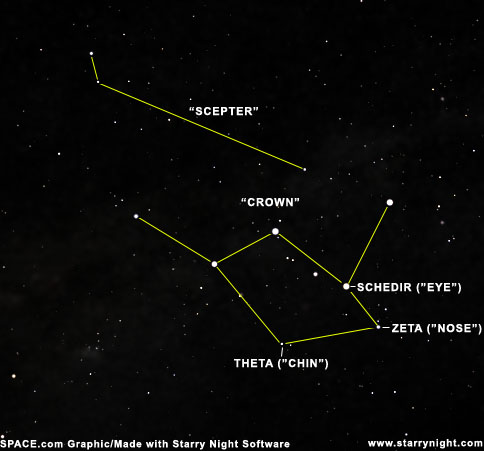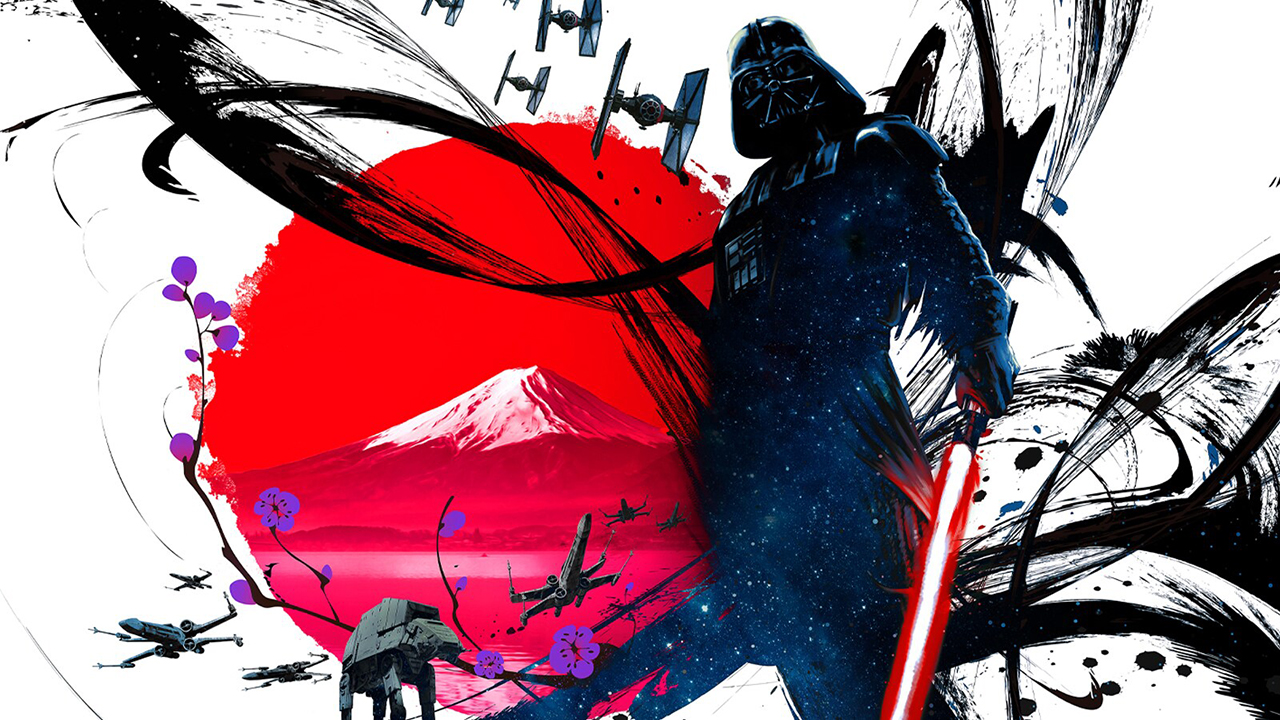
In our current evening sky we have one of the earliest soap-operalike stories, with two independent plots becoming intertwined into one. Perhaps we could call it the celestial version of "All My Children."
One of the key characters is Cassiopeia, the Queen, a zigzag row of bright stars. In terms of popularity, she probably ranks fourth among the star patterns behind the Big Dipper, Orion and the Pleiades. Certainly her shape is easy to remember: an irregular letter "M" or "W" formed by its five brightest stars, depending on how you look at it.
At this particular season, with Cassiopeia hovering high above Polaris, the North Star at around 9 p.m. local time, the "M" shape is most recognizable. When two fainter stars are added, the seven together outline Cassiopeia's chair or throne which was set close to the Pole of the sky.
Cassiopeia and Ursa Major (the Big Bear) appear to whirl around opposite to each other from Polaris. In the fall and early winter evenings when the Queen is high, the Bear appears to be hibernating near the northern horizon.
For many years I have looked at Cassiopeia's outline a bit differently than most of the standard astronomy texts and stargazing guides. To me, she resembles not an "M" or "W" nor a chair or a throne, but rather the Queen's face in profile.
The face is best viewed as soon as it gets completely dark, about 90 minutes after local sundown, with Cassiopeia standing high in the northeast sky.
The zigzag row of five bright stars would mark the outline of the Queen's crown. The bright star, Schedir would be the Queen's eye, while a nearby fainter fourth-magnitude star, Zeta, would mark her nose. Finally, a fifth magnitude star, Theta, not usually plotted on most popular star charts of this region of the sky, marks the Queen's chin.
Get the Space.com Newsletter
Breaking space news, the latest updates on rocket launches, skywatching events and more!
You could even embellish this scene a bit by pretending that the faint stars Kappa, 48 and 50 Cassiopeiae compose the Queen's scepter, hovering just above the Queen's head.
It wouldn't be the first time, incidentally, that a star pattern referred to as a scepter has been placed in this part of the sky. Not too far from Cassiopeia is a group of stars that once supposedly formed the obsolete constellation of the Scepter and the Hand of Justice, created by Augustin Royer in 1679. Today, those stars officially belong to the constellation of Lacerta, the Lizard, named in 1687 by the astronomer Johannes Hevelius. It is a small constellation, with no bright stars, but just imagine going from a regal implement to a lowly lizard in the span of just eight years!
Cassiopeia's husband was Cepheus, the King of Ethiopia, who during early November evenings seems upside-down. Rather than a king, he seems to resemble a church with a steeple or perhaps an Alpine ski lodge with a steep, snow-shedding roof.
In our celestial soap opera, Cassiopeia had offended the sea god Neptune by boasting that her beauty rivaled that of the Nereides (sea nymphs).
Since the Nereides were goddesses and disliked being compared to a mere mortal princess, so they complained directly to Neptune. Neptune in turn, answered Cassiopeia's boasts by flooding the seacoast and sending a vicious sea monster (Cetus, sometimes also called the Whale) to ravage the land. Nobody was able to fight the monster, and there seemed to be no way to get rid of him.
To save Ethiopia, Cepheus followed the advice of the oracle of Ammon in Libya and chained his daughter, the princess Andromeda (now overhead) on the rocky shore as a sacrifice. So Andromeda was chained to a rock by the sea and left to her fate. Presently, Cetus emerged from the waves to swallow her.
As Cetus approached, however, Perseus, the Hero appeared on the Winged Horse, Pegasus. Perseus was returning from a mission to slay the Gorgon Medusa, who had snakes for hair and whose hideous gaze turned the viewer to stone. Perseus removed her severed head from his pouch and held it front of Cetus, petrifying him. So Andromeda was saved and became betrothed on the spot to Perseus. Then the two went off into the sunset on Pegasus and presumably lived happily ever after.
This all supposedly happened thousands of years ago, but on chilly November evenings you can see them all in the sky as constellations: the King, the Queen, the Princess, the Hero, the Flying Horse and the Sea Monster. They're all in the same region of the sky, and when Cassiopeia is high up, all the other characters in our soap opera can be seen as well.
Basic Sky Guides
- Full Moon Fever
- Astrophotography 101
- Sky Calendar & Moon Phases
- 10 Steps to Rewarding Stargazing
- Understanding the Ecliptic and the Zodiac
- False Dawn: All about the Zodiacal Light
- Reading Weather in the Sun, Moon and Stars
- How and Why the Night Sky Changes with the Seasons
- Night Sky Main Page: More Skywatching News & Features
Joe Rao serves as an instructor and guest lecturer at New York's Hayden Planetarium. He writes about astronomy for The New York Times and other publications, and he is also an on-camera meteorologist for News 12 Westchester, New York.
Join our Space Forums to keep talking space on the latest missions, night sky and more! And if you have a news tip, correction or comment, let us know at: community@space.com.

Joe Rao is Space.com's skywatching columnist, as well as a veteran meteorologist and eclipse chaser who also serves as an instructor and guest lecturer at New York's Hayden Planetarium. He writes about astronomy for Natural History magazine, Sky & Telescope and other publications. Joe is an 8-time Emmy-nominated meteorologist who served the Putnam Valley region of New York for over 21 years. You can find him on Twitter and YouTube tracking lunar and solar eclipses, meteor showers and more. To find out Joe's latest project, visit him on Twitter.









